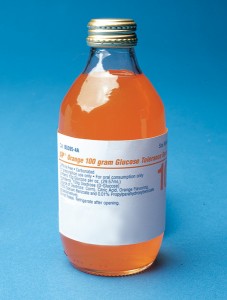 This is the second part of Gestational Diabetes. In the first blog post, we learned that Gestational Diabetes is a form of diabetes that occurs during pregnancy alone. It is usually treated by dietary changes or insulin. Look back at part one to look at the risk factors of getting Gestational Diabetes and the future risks for Diabetes.
This is the second part of Gestational Diabetes. In the first blog post, we learned that Gestational Diabetes is a form of diabetes that occurs during pregnancy alone. It is usually treated by dietary changes or insulin. Look back at part one to look at the risk factors of getting Gestational Diabetes and the future risks for Diabetes.
Now let’s take a look at some interesting facts of Gestational Diabetes:
How Gestational Diabetes Resolves?
The most amazing aspect of Gestational Diabetes is that more often than not, it resolves once the baby is born. It also rarely occurs on the first pregnancy and usually occurs on the second pregnancy. But, it can occur in any pregnancy. The cause of getting Gestational Diabetes is still relatively unknown. Some believe it is normal in a certain number of pregnancies. Others believe that it is the weight gain that primarily affects the change in a glucose-insulin relationship. And others believe that pregnancy causes a change in the pancreas as if it doesn’t need to work as it has before.
Once on a treatment plan, you will be given a Glucometer, a small machine that checks the glucose level in the body. You can do this at home and is easy to use.
Risks for those Treated for Gestational Diabetes
When a mother is diagnosed with Gestational Diabetes and is treated, additional changes or findings are seen in the child that is born. Again, this is for the baby whose mother is treated for Gestational Diabetes. These babies often have a low birth weight, can be born prematurely.
Often for the mother, the pregnancy should go more smoothly, but at time of birth, there is a increased risk for a premature birth and a need for Labour to be induced.
Possible Symptoms
For those who do have symptoms they are as followed:
1.) Blurred vision
2.) Fatigue
3.) Nausea
4.) Vomiting
5.) Frequent bladder infections
6.) Increased thirst
7.) Increased urination
As is obvious by this list, pregnancy alone can account for several of these symptoms and often it isn’t until after diagnosis that one will look back and see that these symptoms were present.
How to Diagnosis Gestational Diabetes
The diagnoses of most diseases are done according to matching symptoms and a disease. But since Gestational Diabetes doesn’t have a lot of symptoms, diagnosis is done through a screening tool. As most pregnant woman knows, this tool is the glucose tolerance test. This is an orange drink you take while fasting and then you measure your body’s response and how much glucose remains in the blood after time.
This test should be administered between weeks twenty four and twenty eight. (24-28)
Insulin
Insulin is a hormone secreted and even produced in the pancreas. The Pancreas is an organ that sits just behind the stomach. Insulin that floats in the blood, finds glucose and together they combine and are eaten up, in a sense, by cells throughout the body. The body regulates insulin in sort of a supply vs demand balance. When glucose levels are high in the blood, the pancreas kicks out a boat load of insulin. When the supply of glucose is low, so is the insulin level.
Fake insulin is the insulin that is used as medication. In diabetes, low insulin is often the key. This is the same when speaking about Gestational Diabetes. This insulin type is very similar to that of human insulin. Pig insulin is almost a perfect match to human, and cow is very close as well. Even insulin from some fish are somewhat close to that of human.
The first fake insulin used as medicine was taken from a pig. Quickly thereafter, recombinant analogues became available and is used today.
Gestational Diabetes is a very interesting condition. In itself, it often resolves on its own. How many conditions can say this? It can be scary to learn that you have this condition. But now, hopefully you’ll be more in tune and knowledgeable about diagnoses, symptoms and treatment.


